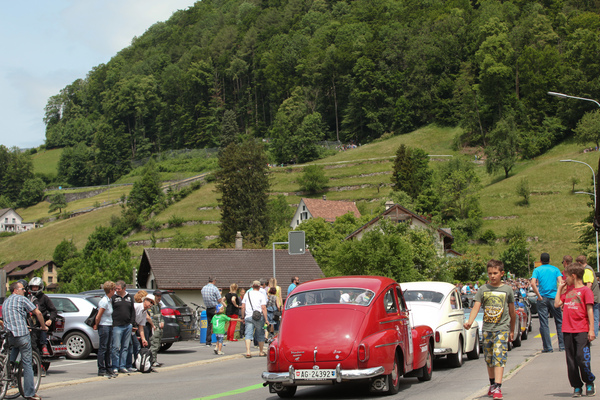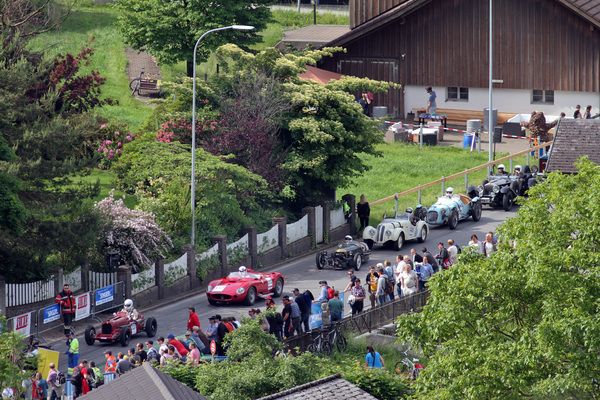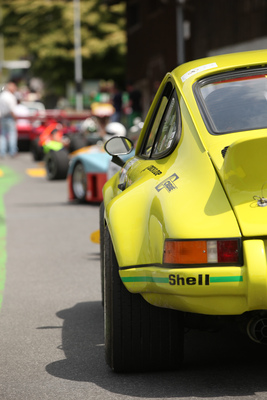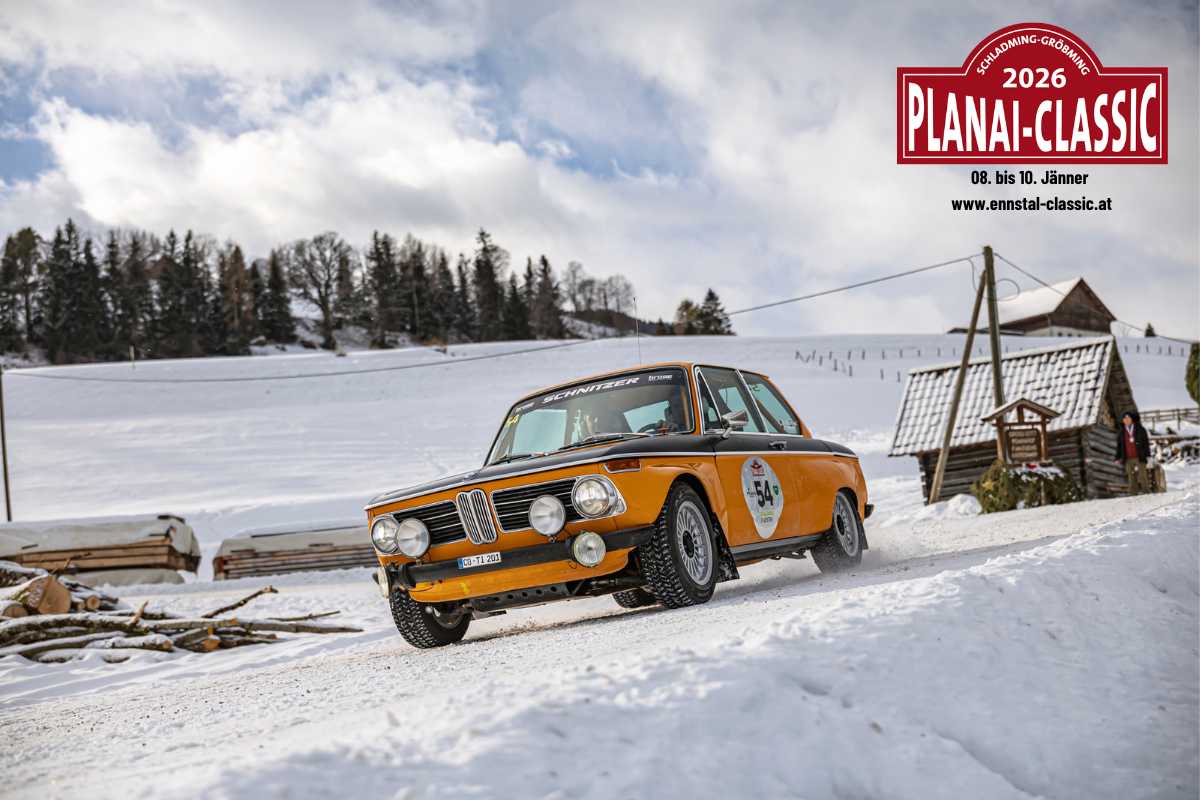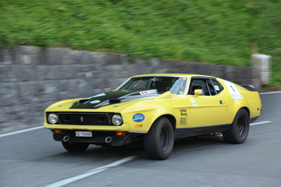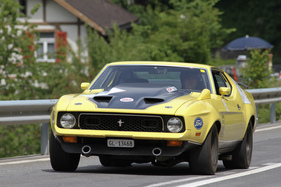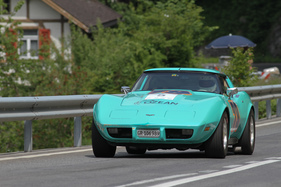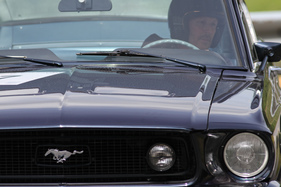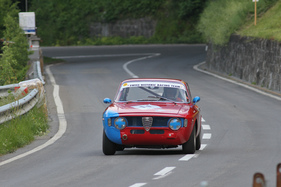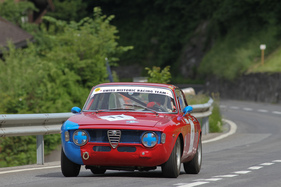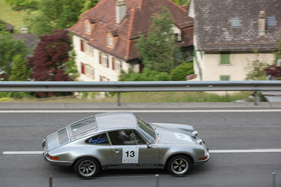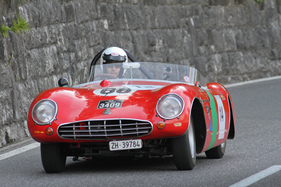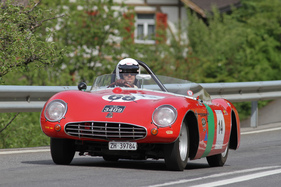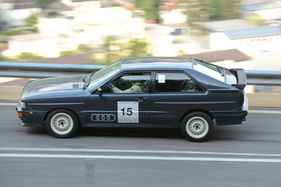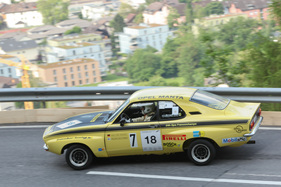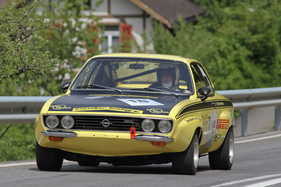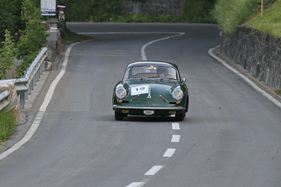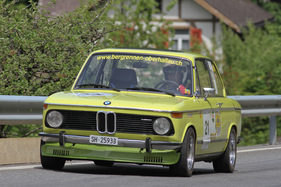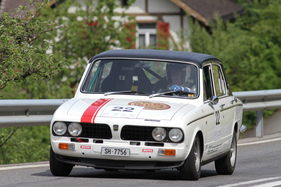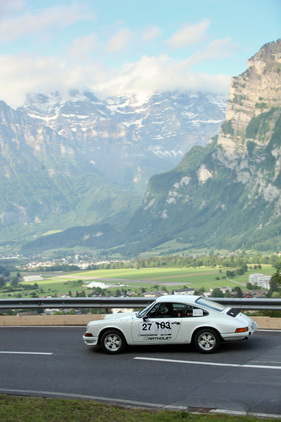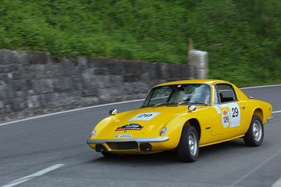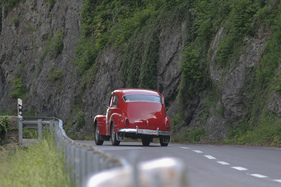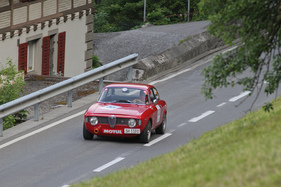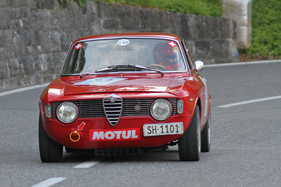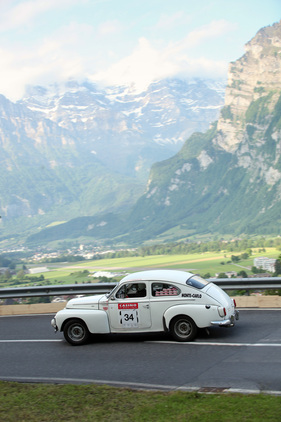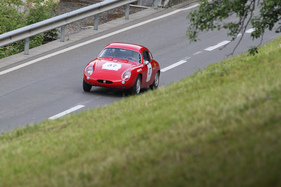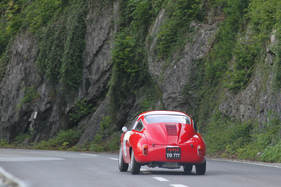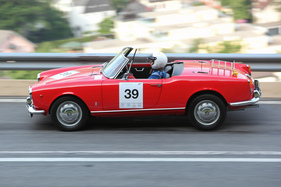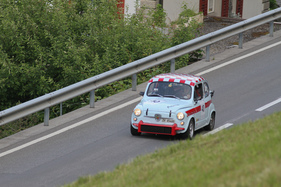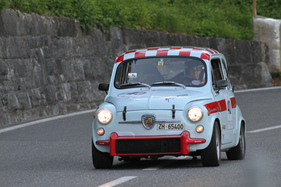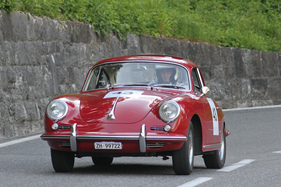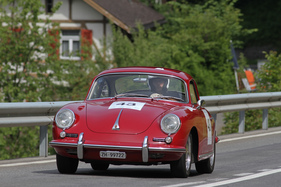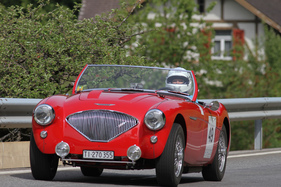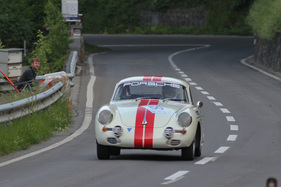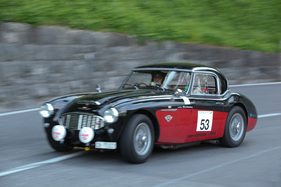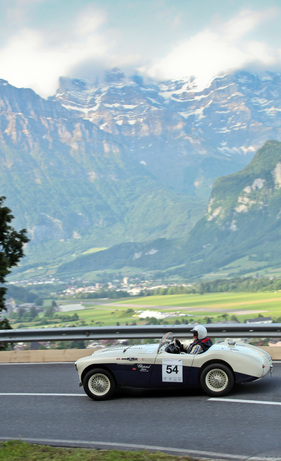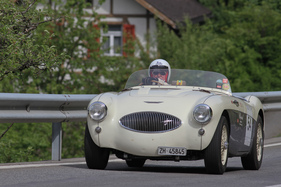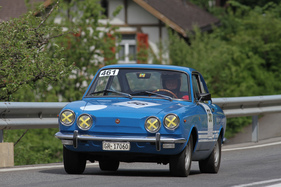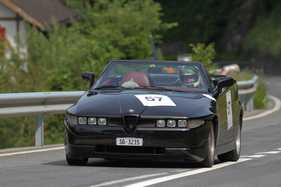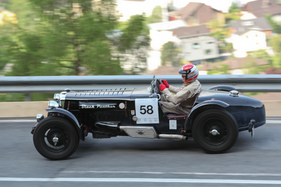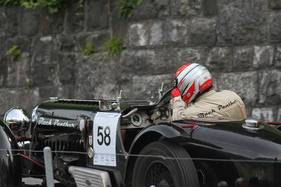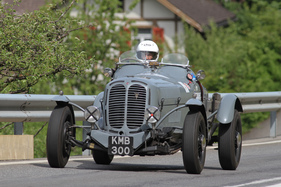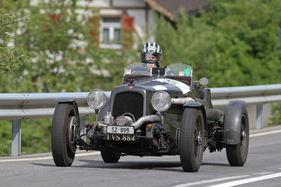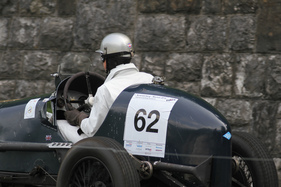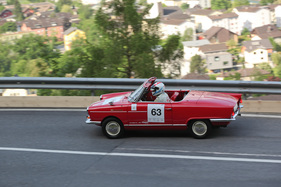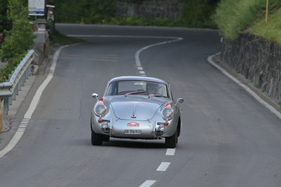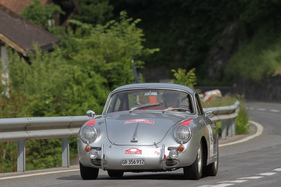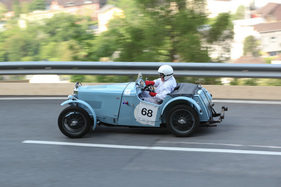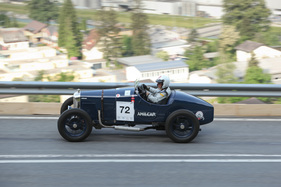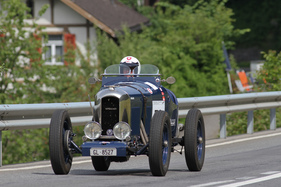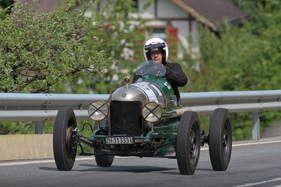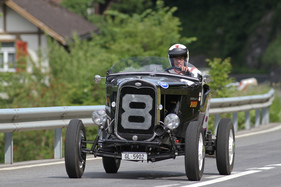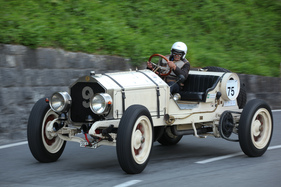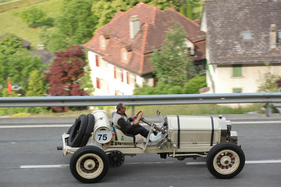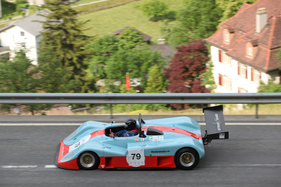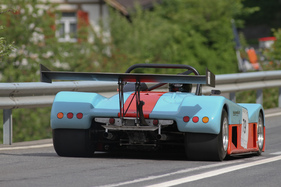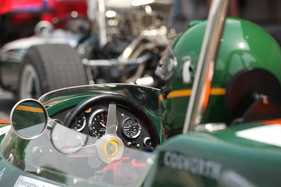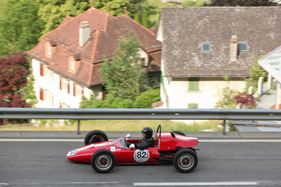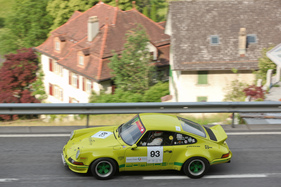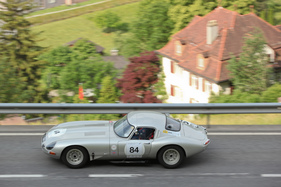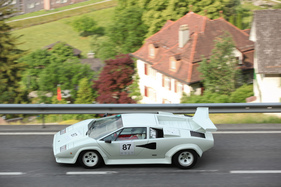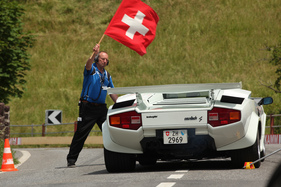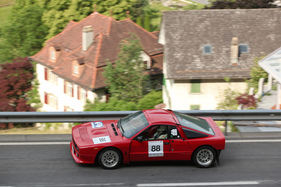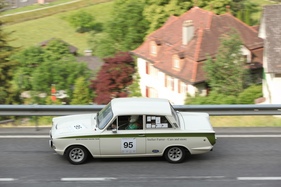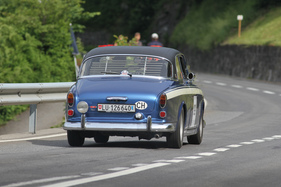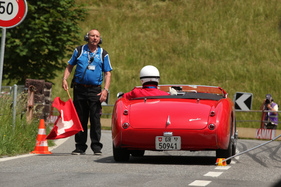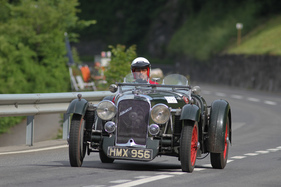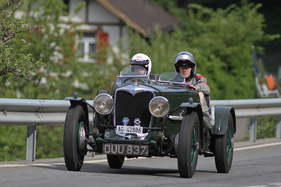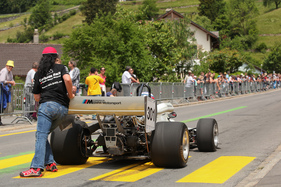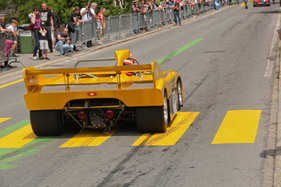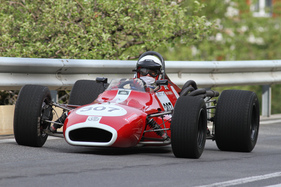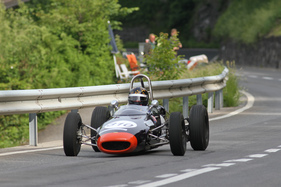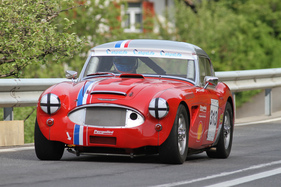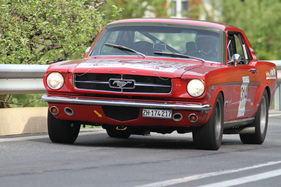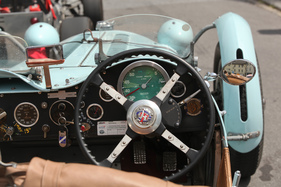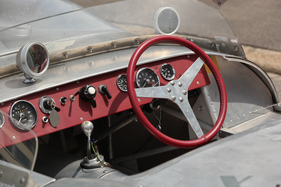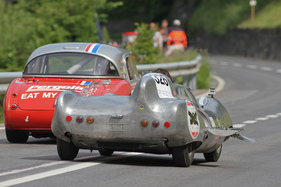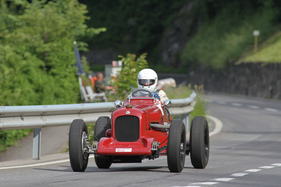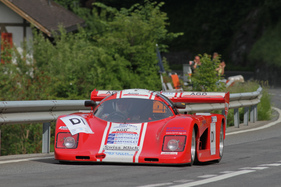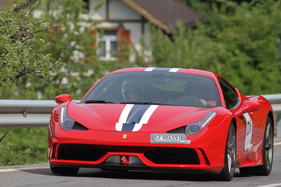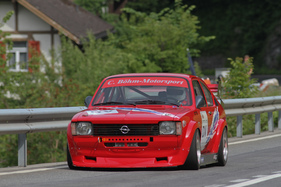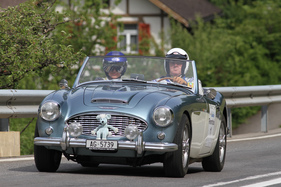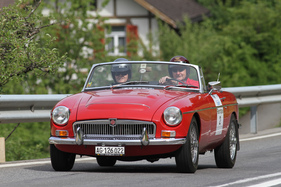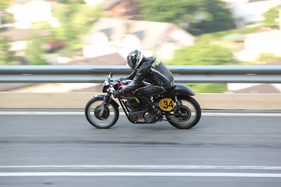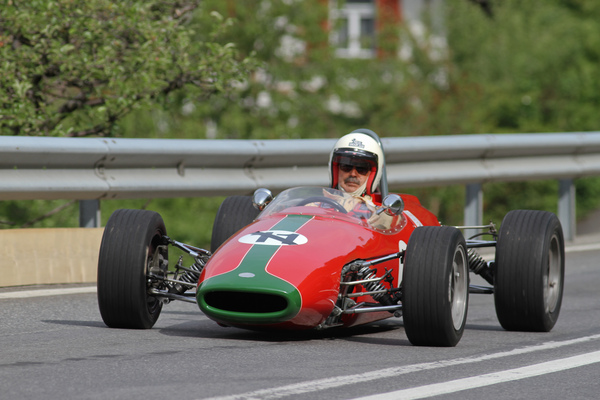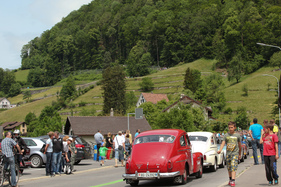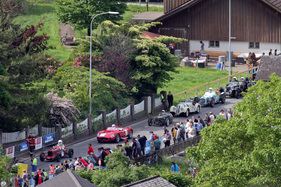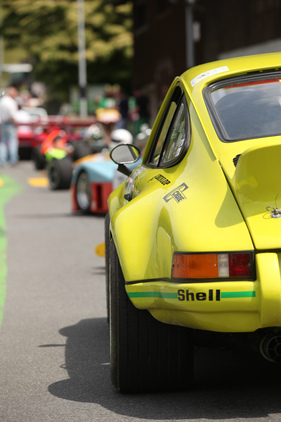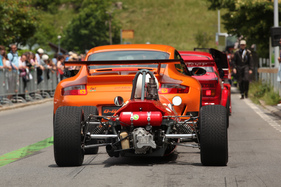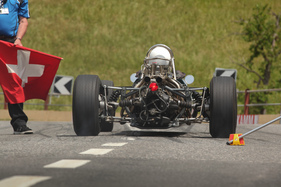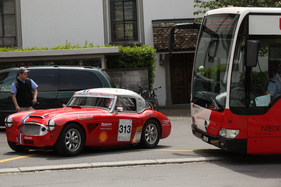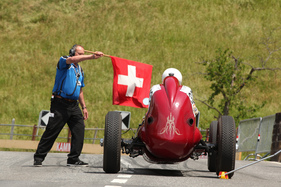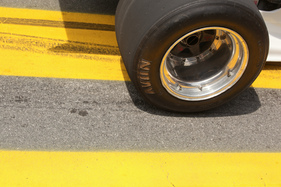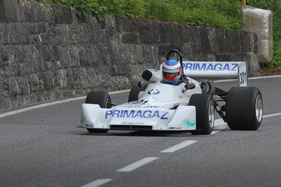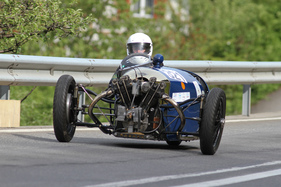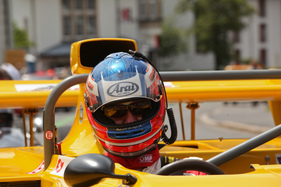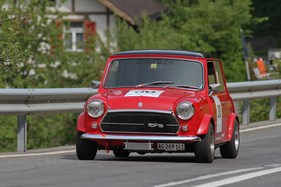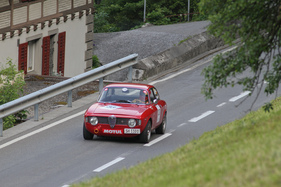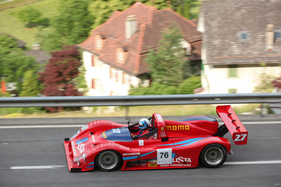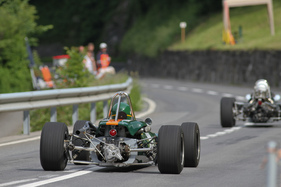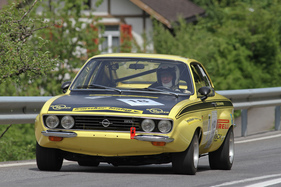In 1967, a hill climb from Mollis towards Kerenzberg was started for the first time. In 1968, the event was already part of the Swiss Championship, and in 1969 it was even part of the European Championship. Big names competed, including Silvio Moser, Peter Sauber, Walter Brun, Xavier Perrot and Karl Foitek. And it was precisely this Karl Foitek who was at the start again on May 30, 2015, when the Kerenzerberg Revival was held for the first time.
Large starting field
Around 150 racing and sports cars were registered, as well as a few motorcycles. And indeed, the list of participants included drivers and vehicles that had already driven up the Kerenzerberg in the 1960s. Guido Käppeli, for example, was already competing for the Swiss championship in his Matra Djet VS back then.
But not everyone was lucky. Karl Foitek, for example, couldn't get his 1960 Alfa Romeo Sprint Zagato to run properly, the six-year-old fuel in the tank wouldn't burn properly and the Alfa ran worse and worse.
Others also had technical problems or even minor accidents, so that the field of drivers was already somewhat thinned out on Saturday.
Buses on the hill climb
However, the fact that there were fewer cars on Sunday was also an advantage, as it meant that the racing program could be carried out better. The biggest restriction proved to be the scheduled bus service, as the buses wanted to be sent along the mountain road according to the regular timetable.

They made the journey quite quickly, but despite this, each bus journey meant a break of between 20 and over 30 minutes for the race, while the public had to make do with one of the buses on the route.
In addition, there was a fixed and not short lunch break, so that neither on Saturday nor on Sunday four training/race runs could be carried out, there were then three runs each.
Four tight bends over 2.5 km
The course impressed the participants because, with the exception of the four hairpin bends, it was extremely flowing, as demonstrated by the best time of 1 minute 24.75 seconds set by the day's winner Roger Moser on his Martini Formula 2, as he covered the 2.5 kilometers at an average speed of around 110 km/h.
The upper part of the track in particular allowed high speeds and called for powerful engines.
Two chains
Sue Darbyshire is a well-known racing driver in Switzerland, even though she always travels to the events from England. She is always good for a surprise with her 1928 Morgan Super Aera. This time, however, it was not only the class victory in the Competition class that many will remember, but the loss of a chain on her vehicle in the first race on Sunday morning and seven seconds of lost time.
The Morgan tinkerers actually solved the transmission problem on their vehicles by installing two chains. Instead of a gearbox, they then only needed a kind of chain changer mechanism to realize the two different gear ratios. It was the second-gear chain that then gave way in the second hairpin bend, so Sue completed the entire run in first gear. In the end, she still won her class "C", followed by two other tricycles from England.
As already mentioned, the day's winner was Roger Moser in the 1983 Martini Mk 28 BMW Formula 2, with Arnold Luciano in the 1971 Brabham BT 36 F2 coming in second and Christian Kleinguti in the 1970 Brabham F2 BT 30-10 third.
In the Formula Junior category, Philipp Buhofer came out on top in his 1963 Lola Mk 5.
With nine categories and 20 drivers competing, there were of course many class winners to celebrate, and Peter Wyss' spirited drive in the Sauber C3 from Autoaus deserves a mention here.
Uniformity champion
Walter Toscan himself would never have dreamed of this. In his Innocenti Mini Cooper, he managed to complete the two runs from Mollis to Kerenzerberg with identical times.
Ernst Estermann in the Alfa Romeo Giulia Sprint GT was one hundredth of a second behind. A difference of 10 hundredths was just enough for 9th place.
Incidentally, only cars that drove slower than 1:56.41 were scored, a tribute to the FIVA regulations regarding regularity events. All participants who drove faster received an "NC" (not counted) in the time table and there were quite a few who suffered this mishap.
Beautiful and fast cars
In fact, there were some very powerful and attractive cars in the field.
Fredy Lienhard, for example, gave his Ferrari 333 SP from 1995 a run-out, Bruno Schaffner drove his Lotus 35 from 1965, Urban Fässler even brought the Cooper T77 in Formula 1 configuration from 1965 to Mollis.
The diversity was also pleasing. The audience of around 10,000 people appreciated the wide range of cars, from the 14.5-liter La France to the Renault R5 Turbo, the Lancia Stratos and the Opel Manta.
It was certainly a pity for those who arrived on Sunday that, as is often the case at such events, only part of the field actually drove up the hill.
Friendly residents
The good atmosphere on the mountain was also thanks to the many locals who provided food and drink and spoiled the marshals (and media representatives) with a hot sausage from time to time (thank you at this point!). In general, you could feel the enthusiasm of the local residents in the audience, some of whom had already followed the races between 1967 and 1970.
One would think that with the support of these enthusiasts, it would surely be possible to find even better compromise solutions for the next event, including with the bus operators and the companies and institutions that provided the parking spaces.
Price and performance only just in balance
Participation was not cheap for the stars of the event, the drivers and their racing cars. 990 francs (in the Classic Fun Trophy, where co-drivers were allowed, 1090 francs) is no small price to pay. This made it all the more difficult to cope with some of the bumps in the organization and the reduced number of training and racing runs, especially as catering, tent rental and hotel accommodation had to be paid for separately.
However, the costs of such an event and, above all, the effort involved in securing the route should not be underestimated and safety is of course important to all participants.
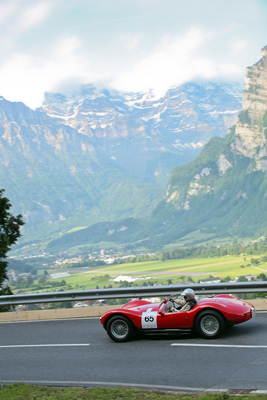
One thing that no organizer can guarantee, but which was completely on the side of the new event, was the weather. Saturday and Sunday shone with sunshine and pleasant temperatures - it couldn't have been better. Of course, the enthusiastic spectators, who were allowed to watch for free along the route, were particularly pleased.


